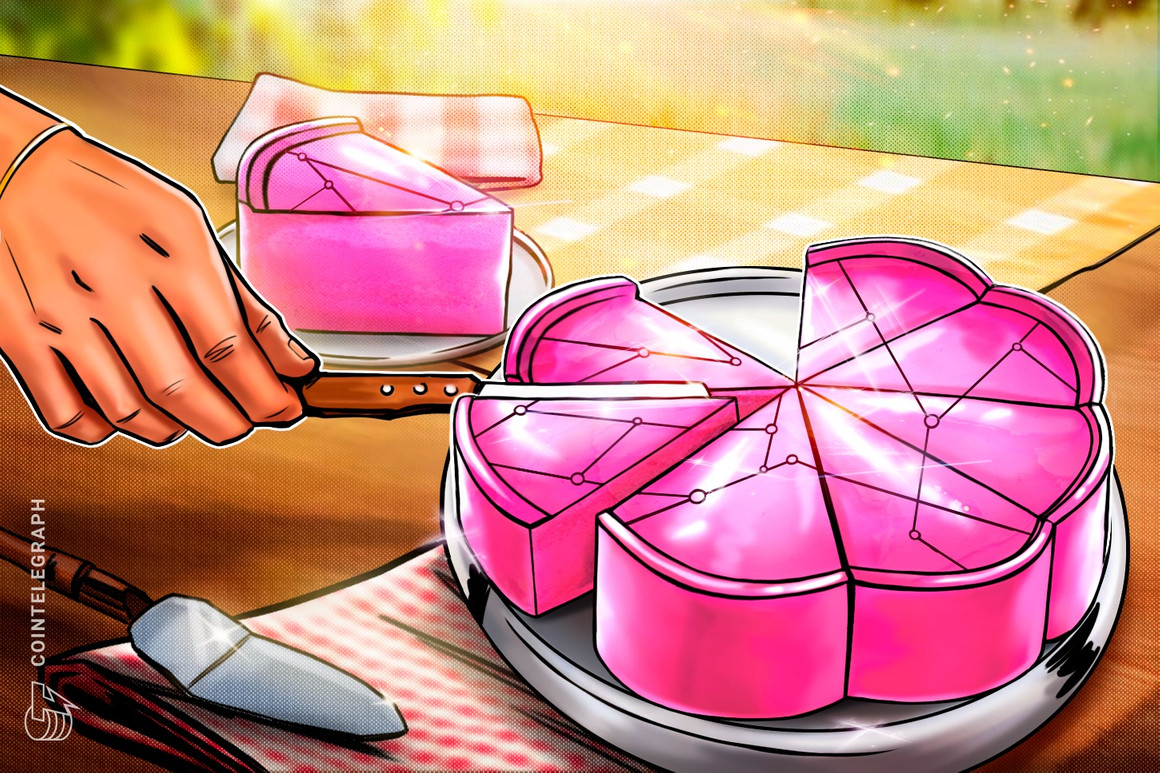While nonfungible tokens (NFTs) are currently suffering in the bowels of a bear market, some are using this time to build and develop new concepts wit

While nonfungible tokens (NFTs) are currently suffering in the bowels of a bear market, some are using this time to build and develop new concepts with the technology.
Once such new concept is fractional NFTs — an iteration of NFTs that enable multiple investors to own a piece of a single token.
These NFTs differ from regular NFTs in that they employ smart contracts to fractionalize the token into a number of parts predetermined by the owner or issuing organization, who then set the minimum price.
When applied to real-world assets, these NFTs provide an interesting use case for investors who plan on owning valuable real-world goods.
Fractional NFTs spread the cost of asset ownership over a wide range of users, making it possible for a group of investors to own a piece of a larger asset.
David Shin, head of global group at Klaytn Foundation — a metaverse-focused blockchain — told Cointelegraph that they “enable more people to reap the benefits of asset ownership while reducing the amount of upfront capital required per user, creating more inclusivity for users who would otherwise have been priced out.”
Tokenized ownership is not a new concept. Before the advent of NFTs, tokenization was a way for users to fractionalize real-world assets. However, fractional NFTs provide a new way for investors to divide the cost and transfer ownership of particular assets.
More accessible assets
Accessibility is one of the major benefits of NFT fractionalization since it’s more affordable for investors, thus reducing the barrier to entry for owning certain assets.
The collective ownership that comes with fractional NFTs allows a group of investors to own assets with traditionally high barriers to entry. For example, owning real estate or art pieces requires investors to meet particular requirements, whether a certain level of net worth or certain legal requirements.
Recent: Gym owners aim to bring NFT memberships to wellness clubs
By using fractional NFTs, these hurdles could potentially be bypassed by the average person. Alexei Kulevets, co-founder and CEO of Walken — a move-to-earn blockchain game — told Cointelegraph:
“No matter whether you are a builder, a collector, or a consumer, with fractional NFTs, you can co-own any fragment of an art piece or an NFT project you work on. Or, it could be something entirely different, where ownership is verified by an NFT (e.g., real estate). Think of it as an exchange-traded fund, only without intermediaries and management fees. I think it’s a beautiful concept, fully worthy of being called the new era of the internet. The era of co-creating and co-owning.”
Joel Dietz, CEO of MetaMetaverse — a metaverse creation platform — echoed the sentiment, telling Cointelegraph, “It makes it easier and, more importantly, accessible. Asset fractionalization isn’t new, but it entered the NFT space not that long ago — one aspect is to make expensive tokens more accessible to different investors with different appetites — it makes it easier to set the price for NFTs and even unlocks monetization opportunities via DeFi platforms.”
This accessibility could also bring additional investors into the blockchain space, Asif Kamal, founder of Web3 fine art investing platform Artfi, told Cointelegraph.
“Fractional ownership is the way forward to enhance the size of the market massively and helps adoption and accessibility to a much wider audience to invest in the asset class more simply and in a much easier way,” he said.
What are the use cases?
Real estate is a popular use case for fractional NFTs, and the underlying blockchain technology provides an additional layer of transparency. For example, users can view previous buyers and investment activity via the blockchain explorer.
Dietz said, “The usual case that everyone’s quite keen on right now regarding Fractional NFTs is the potential for an individual to transfer ownership of real estate (an IRL asset) — storing the information on the blockchain and it transferring seamlessly and immutably.”
“Owning a fraction of an NFT that represents a real-world asset, investors can cash out of their crypto holdings without ever leaving the decentralized finance ecosystem entirely. Now, the hype focuses on real estate, but these fractionalized high-involvement goods could be very interesting in the manner of watches, paintings, boats, planes and more,” he continued.
Play-to-earn gaming is another use case for fractional NFTs, enabling multiple players to purchase expensive in-game assets collectively. In-game NFTs can become very expensive due to demand, and enabling players to split the cost can make it easier for them to use those same assets. For example, the P2E NFT game Axie Infinity is currently testing the idea of fractionalized NFTs by selling fractions of the rarest Axie NFTs.
Barriers to adoption
While fractional NFTs may make it easier for people to invest in certain assets, market conditions could potentially…
cointelegraph.com
